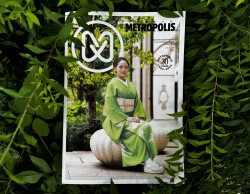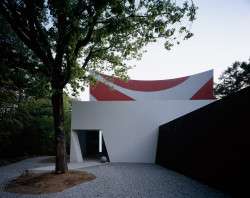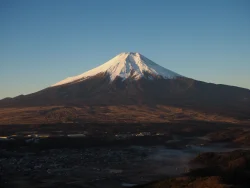
February 27, 2009
Kawagoe
Indulge your sweet tooth while strolling the streets of old Japan
By Metropolis
Originally published on metropolis.co.jp on February 2009

Photos by Charles Glover
Fires, earthquakes, world wars and an insatiable appetite for urban renewal have combined to ensure that you won’t see many hints of Tokyo’s past in the present-day city. But just 40 minutes to the north lies Kawagoe, a delightful old merchant town that offers a window into a bygone era.

Photo by Charles Glover
There’s no shortage of cities in Japan describing themselves as “little Kyoto” or “little Edo,” and this is one of them. Wander 20 minutes to the north of Kawagoe station and you’ll begin to understand why. The area around Ichiban-gai is home to a number of well-preserved kura-zukuri—fireproof merchant houses dating back to the Edo and Meiji periods. Walking through the streets can feel like peering back in time, but as children play with their dolls in the alcoves of the dark gray, fortress-like buildings, visitors are reminded that these are still functioning residences.
The nearby three-story Toki no Kane bell tower is one of Kawagoe’s most distinctive buildings. The bell inside this 16m, chocolate-colored structure tolls four times a day (at 6am, noon, 4pm and 6pm), rung by a clever device that pulls back a log to strike it, without any human assistance.

Photo by Charles Glover
Stroll to the southeast and you’ll find Kita-in temple, the Kanto headquarters of the Tendaishi Buddhist sect. There is a museum and some carefully manicured gardens, but the real reason to visit is for the captivating Gohyaku Rakan (“500 Buddhist disciple statues”). Each of these 40cm figures has a different pose and personality: some are standing or lying and others are happy or angry—one is even picking its nose. Legend has it that if you grope among the statues in the dead of night and place a mark on whichever one feels warm, you’ll discover that it’s the one you most resemble when you come back during the light of day.
The pace of life in Kawagoe tends to be pretty sedate. One notable exception is the third weekend of October, when traditional wooden floats and hordes of people make their way along the main streets for the Kawagoe Matsuri. When one float meets another, a “battle of the bands” of sorts erupts, as both teams dance and play their own traditional music, attempting to make the other group lose the beat. October’s still a long way off, but in the meantime you can visit the Kawagoe Matsuri Kaikan (festival museum), which offers live music performances twice daily on Sundays and holidays, as well as dramatic depictions of the festival and its history.
For a tasty way to finish off your trip, pay a visit to Kashiya-yokocho, a.k.a. Candy Alley, behind the Matsuri Museum at the north end of the Ko-Edo area. The street’s stores offer a selection of candies and a dizzying variety of sembei rice crackers. The quarter’s most unique offering, though, has to be the array of sweet-potato concoctions, from chips to ice cream, coffee and even sweet-potato beer.
Take the JR Saikyo line from Shinjuku (50min), or the Tobu Tojo line from Ikebukuro (30 min). A fully bilingual tourist information center, located inside Kawagoe station, is open 9am-4:30pm year-round. There are various traditional festivals and events held throughout the year to celebrate the city’s heritage, including the Kawagoe Million Lights festival at the end of July. For the latest details about what’s going on, call 049-222-5556 or see www.koedo.or.jp/foreign/english.

Photo by Charles Glover







